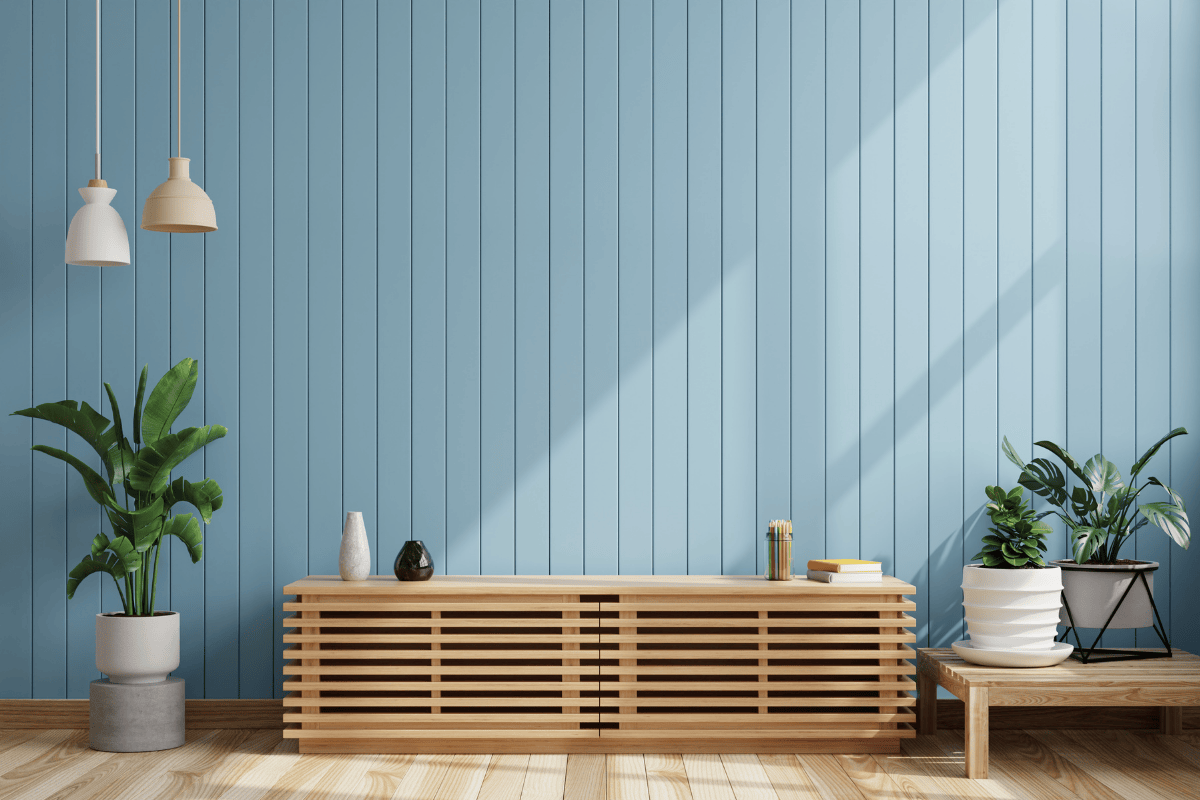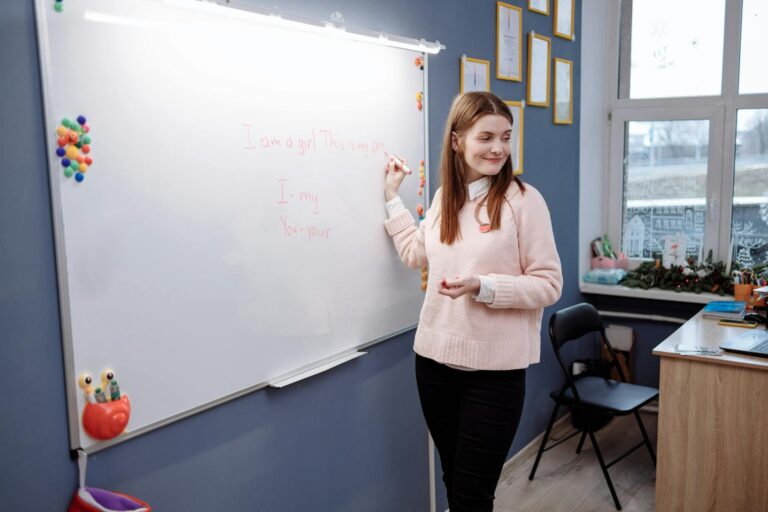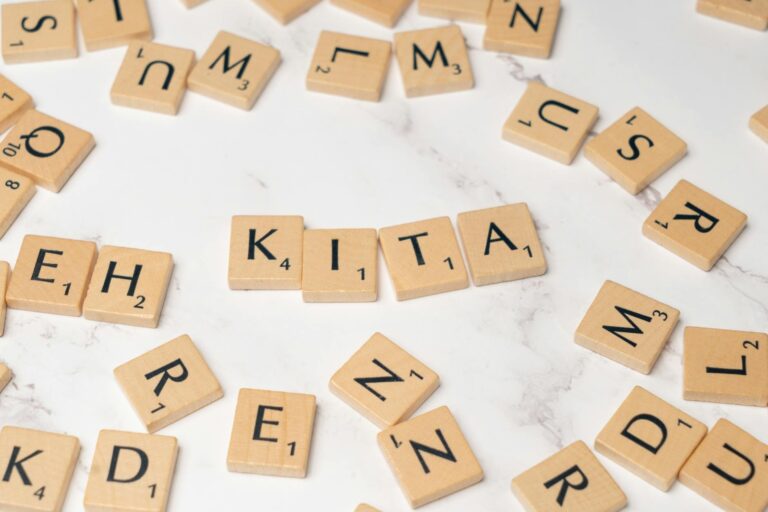Jak opisać pokój po angielsku – kompleksowy przewodnik z przydatnymi zwrotami
Umiejętność opisywania pomieszczeń w języku angielskim to podstawowa kompetencja, przydatna zarówno w codziennych rozmowach, jak i w sytuacjach edukacyjnych czy zawodowych. Niezależnie od tego, czy chcesz opowiedzieć o swoim pokoju podczas lekcji angielskiego, opisać mieszkanie podczas podróży za granicą, czy przygotować się do części ustnej egzaminu językowego, znajomość odpowiedniego słownictwa i struktur jest niezbędna. Niniejszy artykuł przedstawia kompleksowy zbiór wyrażeń, słownictwa i wskazówek, które pomogą Ci swobodnie i precyzyjnie opisywać pokoje oraz inne pomieszczenia w języku angielskim. Opanowanie tych zwrotów nie tylko wzbogaci Twoje słownictwo, ale również pozwoli na bardziej naturalne i płynne komunikowanie się w języku angielskim.
Podstawowe słownictwo związane z pomieszczeniami i ich elementami
Zanim przejdziemy do bardziej złożonych opisów, warto zapoznać się z podstawowym słownictwem dotyczącym pomieszczeń i ich elementów. W języku angielskim najczęściej opisywane pomieszczenia to:
• bedroom (sypialnia) • living room / sitting room (salon, pokój dzienny) • kitchen (kuchnia) • bathroom (łazienka) • dining room (jadalnia) • study / home office (gabinet, biuro domowe) • guest room (pokój gościnny) • children’s room / nursery (pokój dziecięcy)
Każde pomieszczenie zawiera charakterystyczne elementy, które warto umieć nazwać. W przypadku sypialni (bedroom) kluczowe słownictwo obejmuje:
• bed (łóżko) • wardrobe / closet (szafa) • dresser / chest of drawers (komoda) • bedside table / nightstand (stolik nocny) • mirror (lustro) • pillow (poduszka) • duvet / blanket (kołdra / koc) • sheets (prześcieradła) • curtains (zasłony) • blinds (rolety)
W salonie (living room) najważniejsze elementy to:
• sofa / couch (sofa, kanapa) • armchair (fotel) • coffee table (stolik kawowy) • TV / television set (telewizor) • bookshelf / bookcase (regał na książki) • carpet / rug (dywan / chodnik) • fireplace (kominek) • floor lamp / table lamp (lampa stojąca / lampa stołowa) • scatter cushion (poduszki dekoracyjne)
Znajomość tego słownictwa pozwoli Ci budować bardziej złożone opisy i precyzyjnie komunikować się na temat pomieszczeń.
Opisywanie rozmiaru, kształtu i położenia pokoju
Przy opisywaniu pokoju po angielsku warto zacząć od jego ogólnych parametrów – rozmiaru, kształtu i położenia w obrębie mieszkania czy domu. Poniżej przedstawiamy przydatne wyrażenia:
Rozmiar pokoju: • a spacious room (przestronny pokój) • a large room (duży pokój) • a medium-sized room (średniej wielkości pokój) • a small room (mały pokój) • a tiny room (malutki pokój) • a compact room (kompaktowy pokój)
Możemy również podać przybliżone wymiary: • „My room is about 4 meters by 5 meters.” (Mój pokój ma około 4 na 5 metrów.) • „The bedroom is approximately 20 square meters.” (Sypialnia ma około 20 metrów kwadratowych.)
Kształt pokoju: • a square room (kwadratowy pokój) • a rectangular room (prostokątny pokój) • an L-shaped room (pokój w kształcie litery L) • an irregularly shaped room (pokój o nieregularnym kształcie)
Położenie pokoju: • „My bedroom is on the first floor.” (Moja sypialnia jest na pierwszym piętrze.) [Uwaga: w brytyjskim angielskim „first floor” oznacza pierwsze piętro, a „ground floor” parter; w amerykańskim angielskim „first floor” to parter] • „The living room is at the front of the house.” (Salon jest w przedniej części domu.) • „The kitchen is at the back of the apartment.” (Kuchnia jest z tyłu mieszkania.) • „My room is next to the bathroom.” (Mój pokój jest obok łazienki.) • „The study is between the living room and the bedroom.” (Gabinet znajduje się pomiędzy salonem a sypialnią.)
Opisywanie układu pokoju i rozmieszczenia mebli
Kluczowym elementem opisu pokoju jest przedstawienie jego układu i sposobu rozmieszczenia mebli. W języku angielskim używamy do tego przyimków miejsca oraz specyficznych zwrotów opisujących pozycję przedmiotów. Oto najbardziej przydatne wyrażenia:
Przyimki miejsca: • in the middle of (na środku) – „There is a coffee table in the middle of the room.” • in the corner (w rogu) – „The bookshelf is in the corner of the room.” • against the wall (przy ścianie) – „The bed is placed against the wall.” • next to / beside (obok) – „The nightstand is next to the bed.” • between (pomiędzy) – „The armchair is between the sofa and the window.” • in front of (przed) – „There is a rug in front of the fireplace.” • behind (za) – „The floor lamp is behind the armchair.” • under (pod) – „There is storage space under the bed.” • on (na) – „There are several books on the coffee table.” • above / over (nad) – „There is a mirror above the dresser.” • across from (naprzeciwko) – „The TV is across from the sofa.”
Opisywanie rozmieszczenia mebli: • „As you enter the room, you can see…” (Gdy wchodzisz do pokoju, widzisz…) • „On your right/left, there is…” (Po twojej prawej/lewej stronie jest…) • „Opposite the door, you’ll find…” (Naprzeciwko drzwi znajduje się…) • „The room is furnished with…” (Pokój jest umeblowany…) • „The [mebel] is positioned/placed…” (Mebel jest umieszczony/ustawiony…) • „The room is arranged/organized…” (Pokój jest urządzony/zorganizowany…)
Przykładowy opis układu pokoju: „As you enter my bedroom, you’ll see a large wardrobe on your right. Against the far wall, there’s a double bed with nightstands on both sides. Opposite the bed, there’s a dresser with a mirror above it. In the corner next to the window, I have a small desk and a chair where I study.”
Opisywanie kolorów, oświetlenia i atmosfery pokoju
Pełny opis pokoju powinien zawierać również informacje o kolorach, oświetleniu i ogólnej atmosferze pomieszczenia. Te elementy nadają opisowi głębi i pozwalają odbiorcy lepiej wyobrazić sobie dane wnętrze. Poniżej znajdują się przydatne wyrażenia:
Opisywanie kolorów: • „The walls are painted [kolor].” (Ściany są pomalowane na [kolor].) • „The room has a [kolor] color scheme.” (Pokój ma [kolorową] kolorystykę.) • „The dominant color is…” (Dominującym kolorem jest…) • „The room features [kolor] accents.” (W pokoju znajdują się [kolorowe] akcenty.) • „The furniture is mainly [kolor].” (Meble są głównie [kolorowe].)
Opisywanie oświetlenia: • „The room is well-lit / well-illuminated.” (Pokój jest dobrze oświetlony.) • „The room gets plenty of natural light.” (Do pokoju wpada dużo naturalnego światła.) • „The room has [liczba] windows, which provide natural light.” (Pokój ma [liczbę] okien, które zapewniają naturalne światło.) • „The lighting is soft / harsh / warm / cool.” (Oświetlenie jest łagodne / ostre / ciepłe / chłodne.) • „The room can be dimly lit for a cozy atmosphere.” (Pokój może być słabo oświetlony dla przytulnej atmosfery.) • „The main source of light is…” (Głównym źródłem światła jest…)
Opisywanie atmosfery i stylu: • „The room has a cozy / comfortable / welcoming atmosphere.” (Pokój ma przytulną / komfortową / przyjazną atmosferę.) • „The style of the room is modern / minimalist / traditional / rustic / eclectic.” (Styl pokoju jest nowoczesny / minimalistyczny / tradycyjny / rustykalny / eklektyczny.) • „The overall feel of the room is…” (Ogólne wrażenie pokoju jest…) • „The room gives off a [przymiotnik] vibe.” (Pokój emanuje [przymiotnikowym] klimatem.) • „The decor creates a sense of…” (Wystrój tworzy poczucie…)
Przykładowy opis atmosfery pokoju: „My living room has a warm and inviting atmosphere. The walls are painted a soft cream color, which complements the dark brown wooden furniture. The room gets plenty of natural light during the day thanks to two large windows facing south. In the evening, several lamps provide a warm, cozy glow. The overall style is a mix of traditional and contemporary, creating a comfortable space where friends and family can relax.”
Opisywanie detali i elementów osobistych w pokoju
Aby opis pokoju był naprawdę osobisty i szczegółowy, warto wspomnieć o detalach, dekoracjach i przedmiotach osobistych, które nadają pomieszczeniu charakter. Poniżej znajdują się przydatne wyrażenia do opisywania tych elementów:
Elementy dekoracyjne: • „On the walls, there are [liczba] posters/paintings/photographs of…” (Na ścianach znajduje się [liczba] plakatów/obrazów/zdjęć przedstawiających…) • „The room is decorated with…” (Pokój jest ozdobiony…) • „There are several houseplants that add a touch of nature.” (Jest kilka roślin doniczkowych, które dodają nutę natury.) • „The walls are adorned with…” (Ściany są ozdobione…) • „There are decorative cushions/pillows on the sofa.” (Na sofie znajdują się ozdobne poduszki.) • „A colorful rug ties the room together.” (Kolorowy dywan spaja całe pomieszczenie.)
Przedmioty osobiste: • „My collection of [przedmioty] is displayed on the shelf.” (Moja kolekcja [przedmiotów] jest wystawiona na półce.) • „There are family photos on the dresser.” (Na komodzie stoją rodzinne zdjęcia.) • „My desk is usually cluttered with books and papers.” (Moje biurko jest zwykle zastawione książkami i papierami.) • „I keep my favorite books within easy reach next to my bed.” (Trzymam moje ulubione książki w zasięgu ręki obok łóżka.) • „Personal mementos from my travels are scattered throughout the room.” (Osobiste pamiątki z moich podróży są rozmieszczone po całym pokoju.)
Technologia i sprzęt elektroniczny: • „The room is equipped with a [sprzęt].” (Pokój jest wyposażony w [sprzęt].) • „There’s a state-of-the-art sound system for listening to music.” (Jest tam nowoczesny system audio do słuchania muzyki.) • „A [rozmiar] TV is mounted on the wall.” ([Rozmiar] telewizor jest zamontowany na ścianie.) • „My gaming setup is in the corner of the room.” (Mój zestaw do gier znajduje się w rogu pokoju.) • „There’s a workspace with a computer and all necessary equipment.” (Jest tam miejsce do pracy z komputerem i wszystkimi niezbędnymi urządzeniami.)
Przykładowy opis detali w pokoju: „What makes my room special are the personal touches scattered around. On the wall above my desk, I’ve created a gallery of photos from my travels across Europe. My bookshelf isn’t just functional; it displays my collection of vintage science fiction novels alongside small souvenirs I’ve gathered over the years. A handmade quilt from my grandmother adds a splash of color to my bed, while several potted plants bring life to the windowsill. My desk might look a bit chaotic, but it’s organized chaos – filled with art supplies, notebooks, and my laptop where I work on creative projects.”
Praktyczne wzory pełnych opisów różnych typów pokojów
Poniżej przedstawiamy kilka kompletnych przykładów opisów różnych typów pokojów, które mogą służyć jako wzór podczas tworzenia własnych opisów:
Przykład 1: Opis sypialni (Bedroom)
„My bedroom is a medium-sized, rectangular room located on the second floor of our house. It’s approximately 4 meters by 3.5 meters. As you enter the room, there’s a large wooden wardrobe on your right where I keep all my clothes. Against the far wall is my double bed with a comfortable memory foam mattress. The bed is dressed with blue and white bedding and has two pillows. On either side of the bed, there are small nightstands with reading lamps. Opposite the bed, there’s a chest of drawers with a mirror above it.
The walls are painted a calming light blue color, and there are white curtains on the window which faces east, allowing plenty of morning sunlight to filter through. The floor is covered with soft beige carpet that feels lovely underfoot. In the corner by the window, I have a small reading nook with a comfortable armchair and a floor lamp.
What I love most about my room is how peaceful it feels. I’ve decorated it with just a few personal items – some family photos on the dresser, a small collection of houseplants, and a painting of a seascape that I bought during a vacation. The overall style is minimalist but cozy, creating a perfect sanctuary for rest and relaxation.”
Przykład 2: Opis salonu (Living Room)
„Our living room is the largest and most frequently used space in our apartment. It’s a spacious, square room of about 25 square meters, situated at the front of the building with two large windows overlooking the street. The room serves as both a relaxation area and a place to entertain guests.
The focal point of the living room is a comfortable three-seater sofa in dark gray, positioned against the wall opposite the windows. Flanking the sofa are two matching armchairs in a lighter shade of gray. In front of the seating arrangement is a rectangular glass coffee table where we usually place drinks and snacks. Against the left wall stands an entertainment unit housing a 55-inch TV, a sound system, and various decorative items. The right wall features a large bookcase filled with books, photographs, and souvenirs from our travels.
The color scheme revolves around shades of gray, white, and teal, creating a modern yet inviting atmosphere. The walls are painted white, providing a neutral backdrop for colorful artwork. The wooden floor is partially covered by a plush area rug in geometric patterns of teal and gray. The room gets abundant natural light during the day, while in the evening, a combination of ceiling lights and floor lamps creates a warm, cozy ambiance.
What makes our living room special is how it reflects our personality as a family. There are photos from our vacations, books we love, and even a small corner dedicated to board games that we enjoy playing together. It’s a perfect blend of style and functionality, designed for both comfort and socializing.”
Przykład 3: Opis domowego biura (Home Office)
„My home office is a small but functional room located at the back of our house, measuring approximately 3 meters by 2.5 meters. It’s a quiet space, away from the main living areas, which helps me stay focused while working.
The room is arranged with efficiency in mind. The centerpiece is a large L-shaped desk positioned in the corner opposite the door. On one part of the desk sits my desktop computer with a dual-monitor setup, while the other section provides space for writing, planning, and occasional craft projects. My ergonomic office chair is adjustable and provides good support for long working hours. Against the wall to the right of the desk, there’s a tall bookshelf filled with reference books, folders, and storage boxes containing various supplies.
The walls are painted a soft sage green, which I find calming and conducive to concentration. There’s one window above the desk that provides natural light and can be opened for fresh air. I’ve installed adjustable blinds to control the light and prevent glare on my computer screens. The floor is hardwood, with a small area rug under the desk for comfort.
I’ve kept decorations minimal to avoid distractions, but there are a few inspirational prints on the walls and a small plant on the desk to bring some life into the space. The room is well-equipped with technology – besides the computer, there’s a printer/scanner, good lighting, and plenty of outlets for all my devices. Storage solutions, including floating shelves and under-desk drawers, help keep the small space organized and clutter-free. Despite its modest size, this office has everything I need to work efficiently and comfortably from home.”







